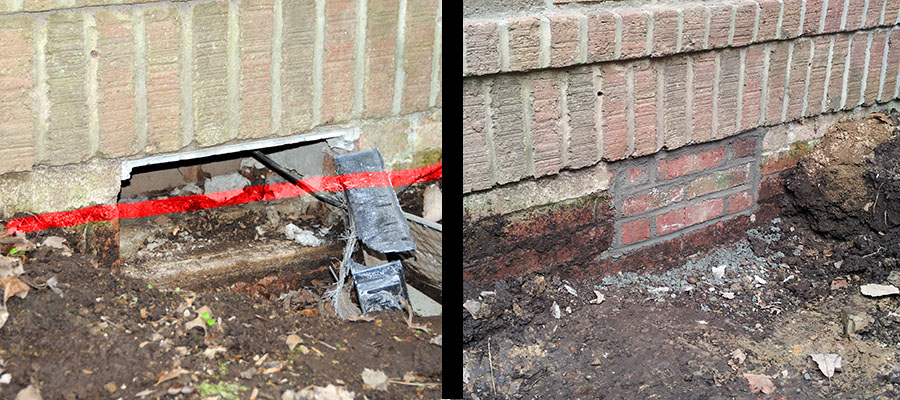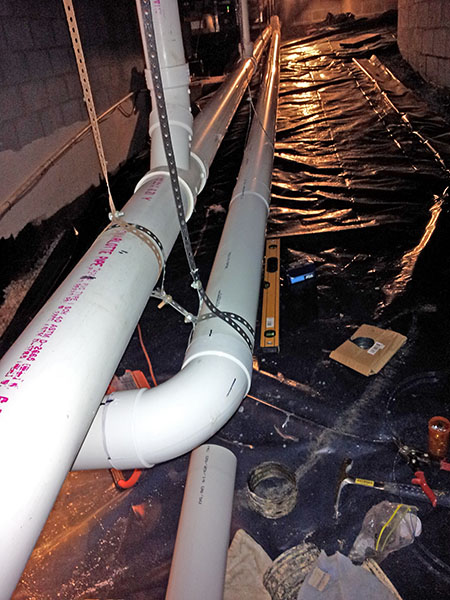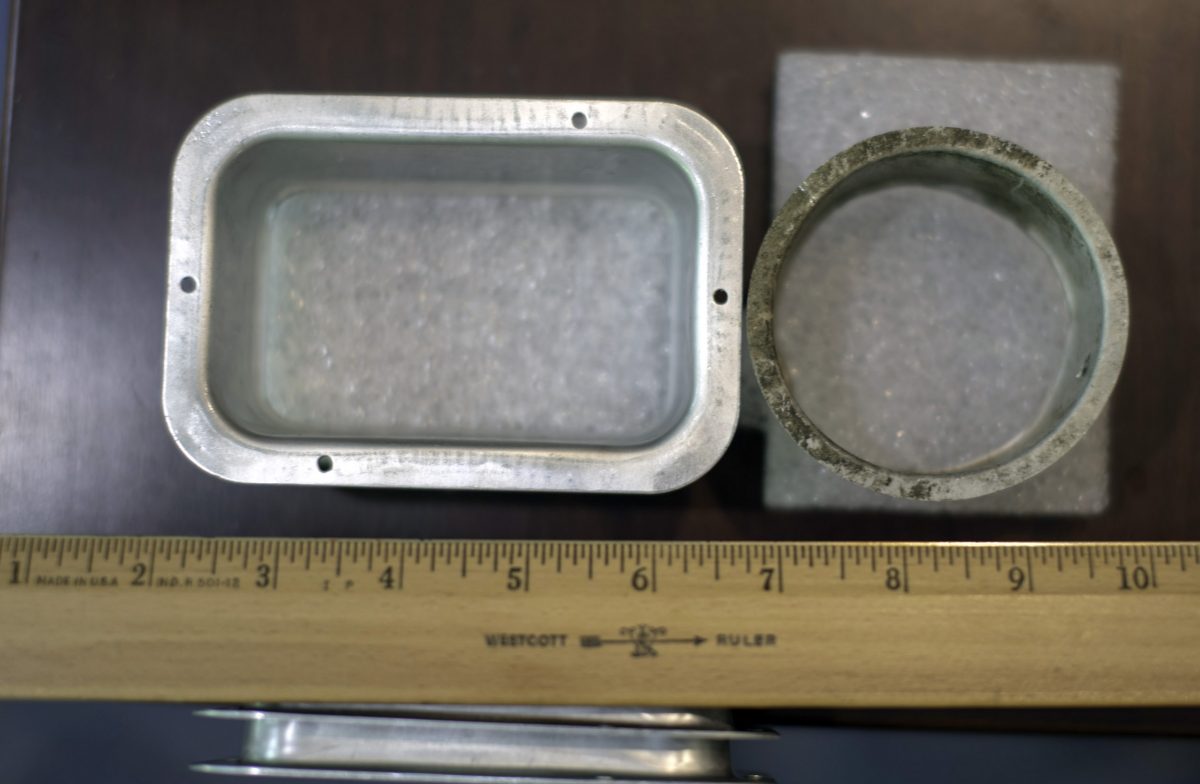Gutters and the Indoor Pool
Gee, wonder why this house smells DAMP?
Cellar vents were BELOW Grade!
See that red line? That was the level of the ground when I bought it. Rain water was rushing into the foundation
Step 1: Brick up all the vents
Step 2: Grade the ground so water flows away from the foundation. I did this around the entire house. This took an entire dump truck full of backfill.
This project might sound boring, but just read on a moment. The first day when we viewed the house with the real estate agent, the house smelled damp. No it wasn’t because it had been shut up and empty. It WAS damp. Humidity in the crawlspace was 98%.
Luckily it rained the next day so we could see what the problem was. When I saw what they had done, I stood there speechless…. I could NOT fathom why anyone would do this.
They emptied the gutters into the crawlspace!
Gutters on one side of the house drained through the house to exit on the other end. But they used landscaping pipe that leaked water into the crawlspace? Yes, that’s what they did. Do I need to repeat that? Does it pass the Sniff Test? If not, SPEAK UP! And get a new contractor.
Hundreds of gallons of water were evaporating into the crawlspace under the house. No wonder no one wanted to buy the place. Luckily, the fix was simple and cost less than $200.
Whenever you do work or have someone do it, look for any critical errors in the design.
OK, I can see that they wanted to carry the drain through the house. Fine. But there were TWO critical flaws:
- They used LANDSCAPE pipe. This is the corrugated stuff that lightly connects. It is NOT supposed to be water tight. With every rainfall, it leaked at least 100 gallons. It spread that water ALL over the crawlspace.
- They dumped the landscape pipes into into the house’s emergency french drain. Then, every time it rained, the long trench inside the cellar filled up with rainwater. It eventually drained out, but it left a large area soaked like a SPONGE. All this then evaporated into the crawlspace area driving the humidity to 100%. Yes, they had a brand new $2000 dehumidifier. But guess what? It too had failed and nobody checked.
The fix cost maybe $200 in parts…
And a lot of labor. I had to run about 90 feet of 6″ SOLID PVC. This picked up the gutters drains at one end, flowed through the house and exited through the wall. I ran the pipes parallel to the existing sewer drains. Looks good and keeps the plumbing together.
And YES, I installed several Access Ports so you can inspect or clean the lines.
To get the water OUT of the house I cut a hole in the block below grade (and sealed it from both sides) and then ran the pipe underground in a 3′ deep trench until the ground fell away and let the water run off. Shame I could not have captured that water and used it for irrigation!
Within DAYS of finishing this project the cellar started to dry out. The company that sold the dehumidifier agreed to repair it under warranty and now the conditioned space is livable space. (update 2019: The repaired Ultra-Aire dehumidifier failed twice more, so I replaced it with an Aprilaire)
So… WHY did the builder not do this in the first place?
Wonder Why the Gutters are Overflowing???
You just have to wonder how these guys call themselves professionals and keep a straight face.
To start, there wasn’t a single gutter that was sloped towards the drain. Had to take them down and hang them properly. Now water runs toward the exit drain.
On a 2-story house — where the upper floor gutters empty into the lower gutters — you will have roughly TWICE the volume of water that must exit the lower gutters. This is not hard to understand. Look at any river: it grows WIDER as more tributaries add to the stream.
The gutter-guy installed the same SMALL outlets everywhere, resulting in the gutters overflowing in any moderate rain shower. Luckily, he used large downspouts.
So, I removed the little exit drains and installed the PROPER-SIZED ones (show on left) and the gutters drain properly now. Another benefit is the larger outlets do not clog so readily.


